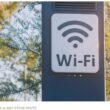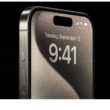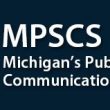The return loss bridge
The return loss bridge (RLB), sometimes called SWR bridge, is handy for many applications in two-way radio work. It provides a quick and easy means of sweep-testing antennas, feedlines, tuning stubs, duplexers, cavities and other frequency-sensitive devices. Typically, the RLB is used to test devices that should show a pass response (indicating high return loss) or a reject response (indicating minimum return loss) or both over a single sweep range. The RLB provides a means of measuring the degree of match or mismatch of the DUT at a particular frequency or frequency band. This is done by measuring the return loss. Return loss can be equated to SWR, reflection coefficient or percent-reflected power by using Table 1.
Figure 1 shows a drawing of a return loss bridge that has an internal 50-ohm precision termination. It is important for the termination to be precisely 50 ohms for the bridge to function properly on 50-ohm communication systems. Some bridges have a fourth port for the reference impedance termination. Such bridges could be used on 75-ohm systems by connecting a 75-ohm termination on the reference impedance port.
Actually, there are two insertion losses-the loss between the source port and the DUT port and the loss between the DUT port and the reflected port. The manufacturer’s specifications may show these two insertion losses separately or combine the two losses and list it as a single loss between the source and reflected ports.
In Figure 1, if the DUT port is left open (or shorted) the difference (in decibels) between the signal applied to the source port and the signal level measured at the reflected port is the insertion loss between the source and reflected ports.
The directivity of the bridge is a measure of the quality of the bridge. The directivity of the bridge must be much better than the return loss that you expect to measure in a particular test setup. For example, don’t expect to measure a return loss of 50dB if the directivity of the bridge is only 40dB. The directivity and insertion loss of the bridge will vary with frequency.
Photo 1 shows a return loss bridge kit that is available through Eagle of Sedona, Arizona. The heart of this kit is the Eagle RLB150N3D return loss bridge. This kit is for use with the Hewlett-Packard model HP8920 Communications Test Set. The various screen prints presented in this column were taken from one of these test sets using the Eagle RLB kit for the HP8920. Before making measurements with a RLB, some basic checks on the bridge should be performed to ensure that the bridge is capable of producing the desired results at the frequency(s) involved.
To measure the insertion loss of the bridge it must be hooked up to the HP8920 through the proper interconnecting cables. These are supplied with the Eagle HP8920 Bridge Kit. Obviously, these cables have insertion losses that shouldn’t be included as part of the insertion loss of the bridge.
Therefore, the losses of the cables have to be nulled out or measured and noted. The test setup for measuring the cable losses is shown in Figure 2. Here, the test cables are connected to a type N barrel or double-female connector. The marker on the screen of Figure 3 shows the level to be -1.26dBm. This is the insertion loss of the cables at the marker frequency of 415.62MHz. The marker level of -1.26dBm can be noted and taken into account later or the instrument can null out the loss by normalizing the trace to 0dBm. On the HP8920, this is done by using the Save B and then the A-B display feature. The screen will show Normalized and a level of 0.00dBm. See the screen print in Figure 4.
The test setup for measuring the insertion loss of the bridge from the source to the reflected port is shown in Figure 5. Be sure to use the same interconnecting cables that were using in the previous procedure. The DUT port is shorted (by connecting a shorted N connector) to the port or simply left open. With the spectrum analyzer still set the same as for the previous test, the insertion loss of the bridge is shown in Figure 6. The marker level at 415.62MHz is at -12.55dBm. Thus, the insertion loss of the bridge is 12.55dB at 415MHz. Next, this level is normalized to the 0dB reference level.
The next step is to measure the directivity of the bridge at the frequency or frequency range to be used in the test procedure. The equipment setup is shown in Figure 7. As shown in the screen print in Figure 8, the return loss and hence directivity of the bridge at 415MHz is over 44dB.
It is desired to check a low pass notch filter operating at 415MHz. The test setup is shown in Figure 9. The screen print in Figure 10 shows the swept frequency response of the low-pass filter. The test setup in Figure 11 shows how the return loss bridge is used to check the return loss at the pass and reject frequencies. The resulting swept frequency response is shown in Figure 12. Compare Figures 12 and 10 and note that the maximum return loss occurs at the pass frequency and minimum return loss occurs at the reject frequency. Referring to Table 1, a return loss of 21.5dB compares to an SWR of less than 1.2:1-a good match.
Figure 13 shows the swept frequency return loss of a magnetic-mount antenna. The resonant frequency or point of maximum return loss is around 146MHz. The return loss of 31dB represents a SWR of less than 1.1:1. It is possible to determine the 2:1 SWR bandwidth of the antenna using the swept-frequency return loss display. In this case, the 2:1 SWR bandwidth is better than 8MHz.
The return loss bridge can also be used as a signal combiner to combine two inputs to a single output. The DUT port is the combined port, with the other two ports as inputs 1 and 2. Figure 14 shows a test setup used to measure the isolation between input ports on the bridge. A 160MHz signal at a level of -10dBm is fed to one input of the bridge while the other input is connected to the input of the spectrum analyzer. The marker level in Figure 15 shows the signal level at -68dBm or better than 55dB isolation. The isolation is good as long as the DUT or combined port “sees” a good 50-ohm impedance at its port. Figure 16 shows the test setup for combining the outputs of two signal generators. Each generator is set to a level of -10dBm. The combined port is connected to the input of the spectrum analyzer through a 13dB pad. This insures that the combined port “sees” a good 50-ohm impedance, thus maintaining a high isolation level between inputs. The isolation is important to keep the signal generators from cross-feeding. As seen in Figure 17, the third-order intermodulation product at 170MHz is down 60dB from the tone level.
The Eagle Bridge Kit met or exceeded all published specifications. The kit comes complete with the following: the RLB150N3D, two high-quality interconnecting cables for the specified communications test set, precision 50-ohm termination, precision short circuit, two 6-dB BNC pads, 2-way power splitter, hard-shell carrying case with foam cutouts for components. For more information on the Eagle return loss bridge or bridge kits for various communication test sets, contact Eagle at (928) 204-2597 or write Eagle at P.O. Box 4300, Sedona, AZ, 86340. Check the website at www.eagle-1st.com for further application notes and information.
For more information on RF devices, principles and practices, look for the author’s new book coming soon from Noble Publishing Corporation of Atlanta. The title of the book is: The Radioman’s Manual of RF Devices, Principles and Practices. Whew!
Until next time-stay tuned!

















